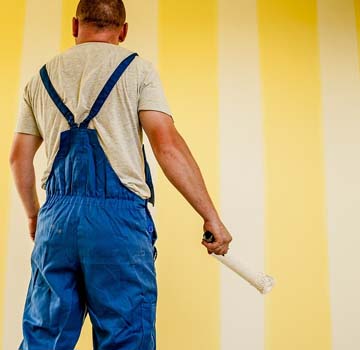These days, a lot of people are tackling their own home improvement projects and trying to do what they can by themselves. With the wide base of information available through the internet and media and the accessibility to the various tools of the trade, it is not really a surprise that more and more people are trying to do it themselves. But, when it comes to painting, what differentiates a commercial painter from an enthusiast?
Traditionally, a painter was responsible for mixing the paint and ensuring that he always had a plentiful supply of pigments, oils, thinners, and driers. After ensuring that he has enough supplies, the painter would then decide on which of his materials he would need to use in order to finish the job that he was assigned and to achieve the final result that he wanted.
However, while it may have been the case that, in older times, a painter was responsible only for painting, the times have changed. In more modern times, the painter’s primary responsibility includes preparing the surface that he is about to paint, using the appropriate protection on surfaces that he is not planning to paint, actually painting the surface, and then cleaning up. Some larger painting firms, such as painting contractors in Melbourne, are generally capable of also performing many painting or decoration services such as creating an accent wall, sign writing, gilding objects, finishing or refinishing furniture, and various other tasks. Smaller firms such as a painter in Bentleigh, or a house painter in Caulfield, may also provide the same services at an increased cost.

So what does preparing the surface to be painted involve? Usually, the painters in Adelaide will have to perform all of the scraping, sanding, patching, stain removal, caulking, fill nail holes or any other defects with plaster or putty, wallpaper removal, cleaning, taping, priming, and preparation of all the necessary tools and materials. Before repainting, a painter may also use sugar soap as an abrasive.
It is also very important for commercial painters to have a lot of knowledge about the tools of their trade in addition to the paint that they use. Not only do these tools include the usual brushes and rollers, but all the additional tools such as paint sprayers and what the painter uses for preparing the surfaces such as scrapers, sanders, ladders, and scaffolding, are things that every commercial painter must be familiar with. In addition to being familiar with the tools that they use to get the job done, commercial painters must also be aware of the many techniques necessary in order to carry out their job. For example, just knowing the sizes and types of their tools and which ones will be the best for that particular job as well as specific taping and dropcloth techniques and the amount of paint, primer, and number of coats required.
